Abstract
Human peripheral blood mononuclear cells freed from polymorphs reduce nitroblue tetrazolium (NBT). This reduction is due to monocytes, i.e. adherent, phagocytic, esterase-positive cells with Fc receptors. Monocytes allowed to phagocytose zymosan show increased NBT reduction which under optimal conditions is 12.2 +/- 2.4 x 10(-9) mol . hr-1 . 10(-6) monocytes. Monocytes which have phagocytosed zymosan depress the mitogen response of human lymphocytes to PHA. This effect of 'activated' monocytes is due to a soluble inhibitory mediator which appears in the supernatant after culture for 24 hr. Its appearance requires protein synthesis. It is suggested that NBT reduction of peripheral blood mononuclear cells can be used as a test for the state of monocyte activation in disease. The possibility that activated monocytes may depress blast transformation in vitro in disease states is discussed.
Full text
PDF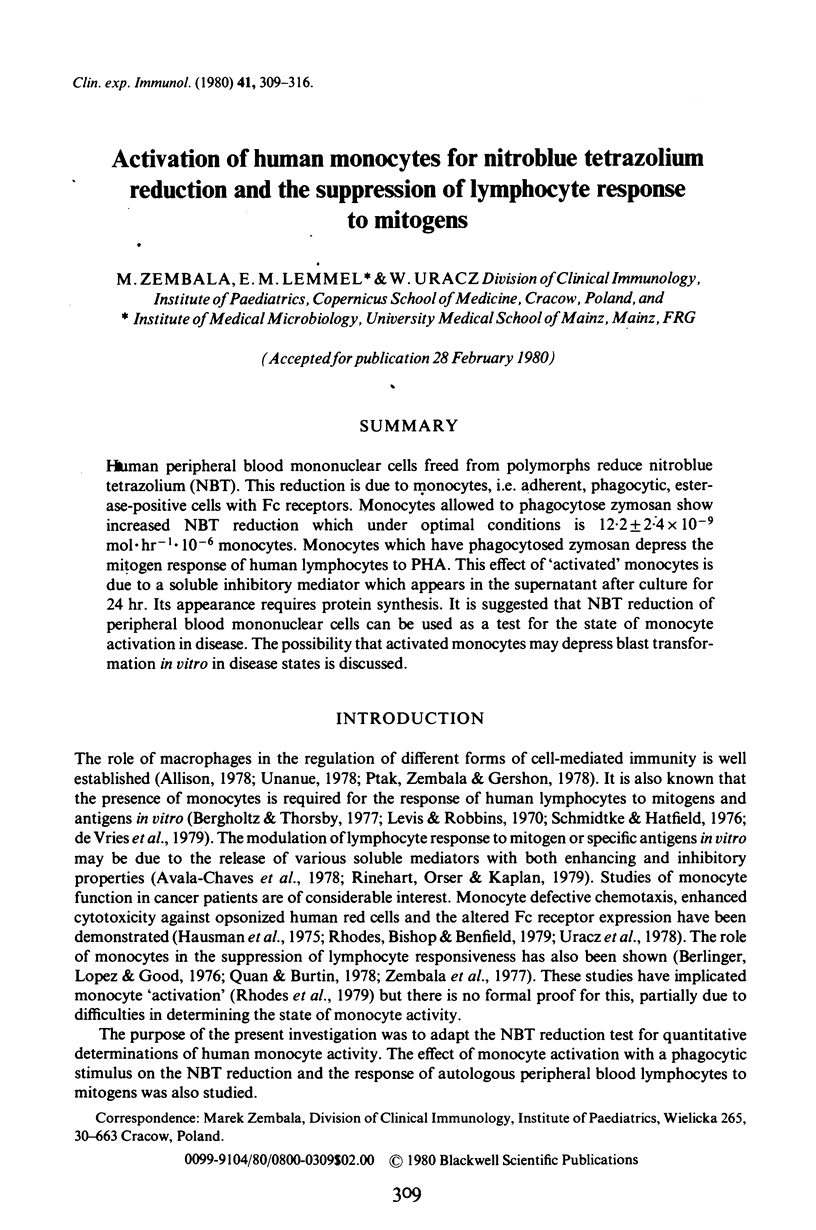
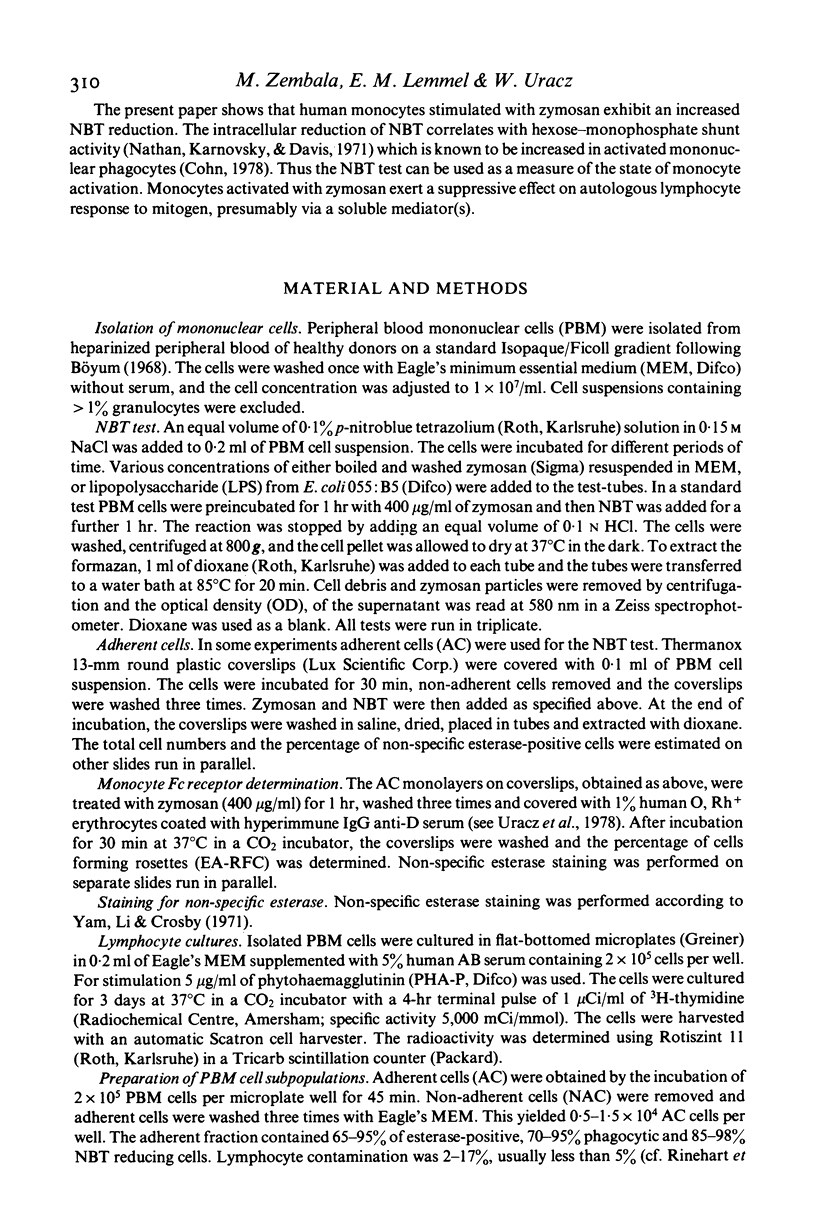
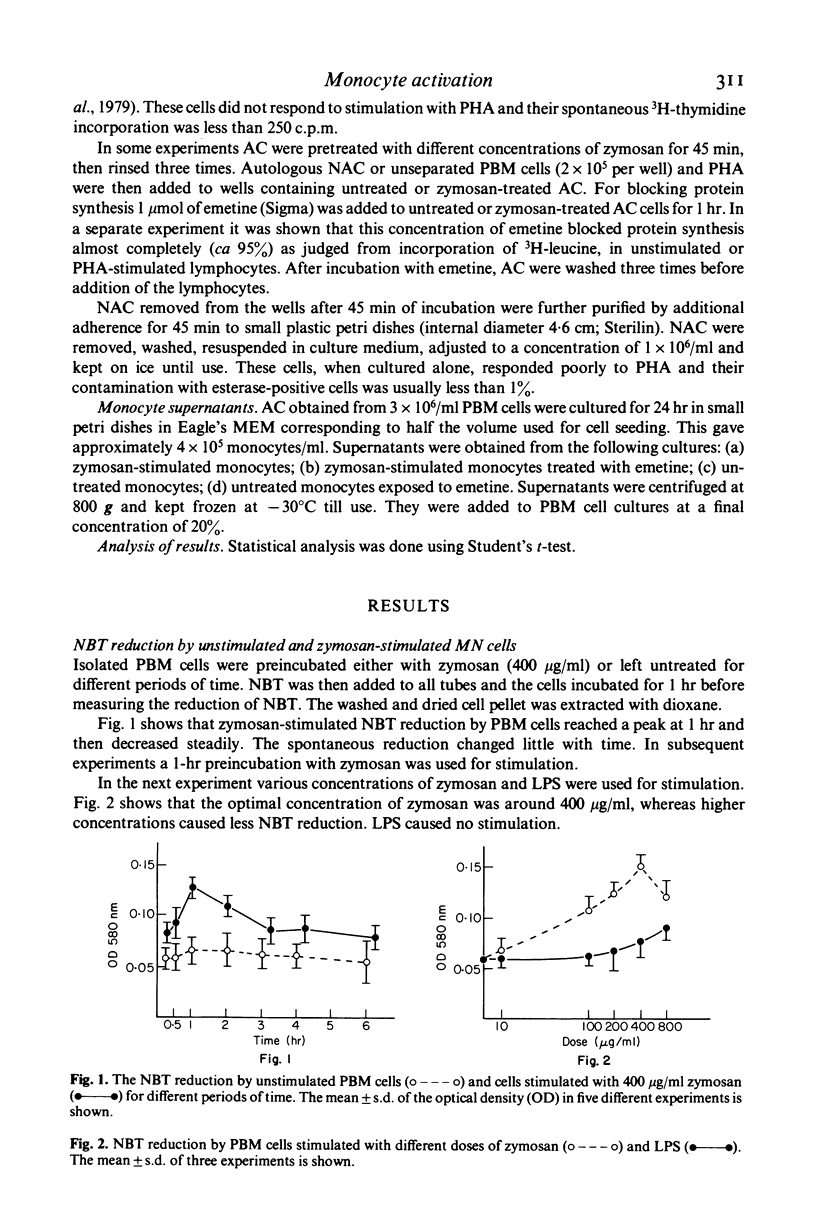
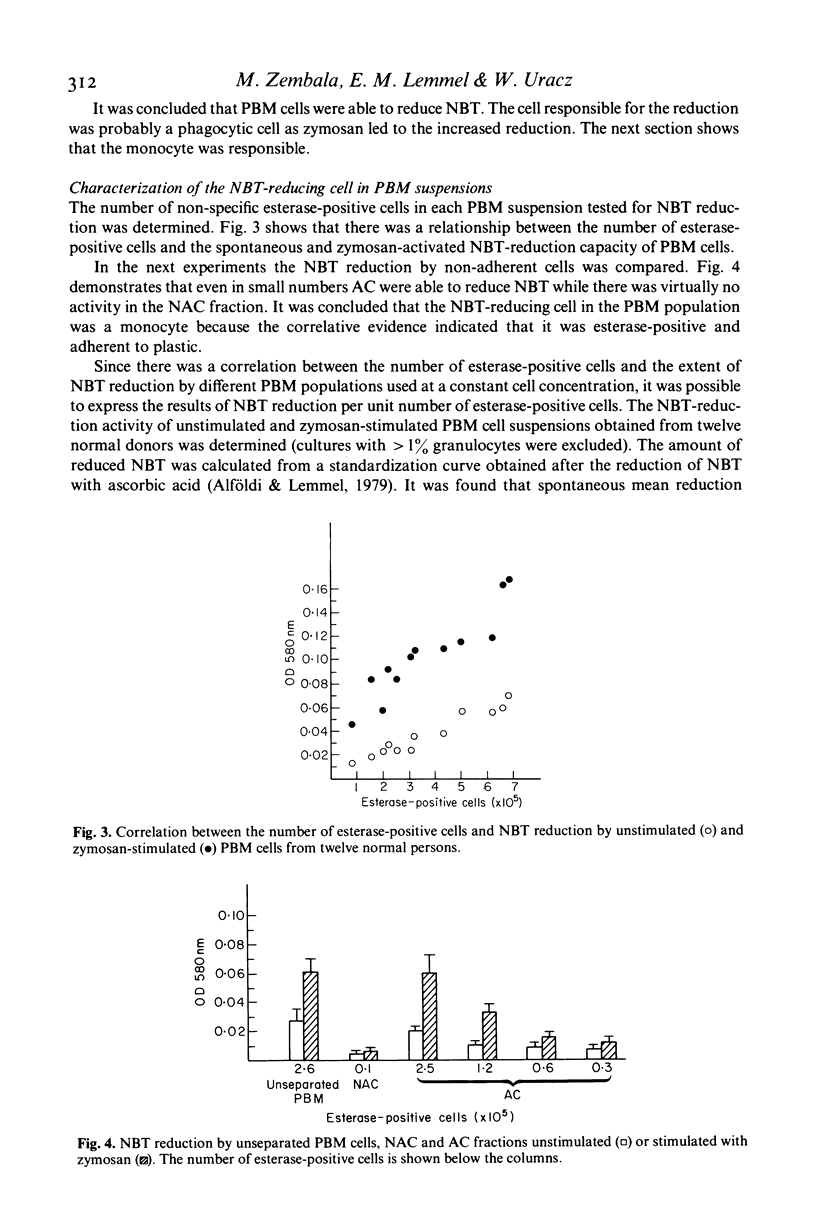
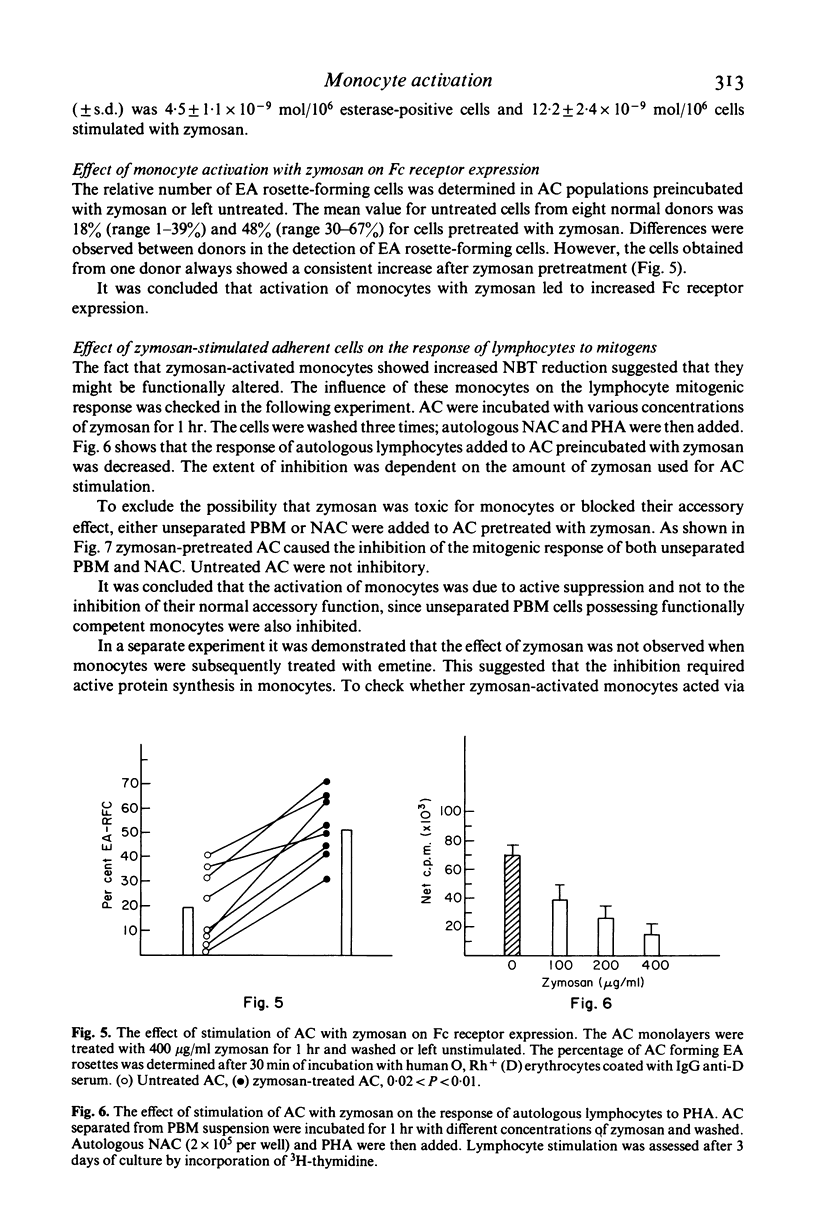

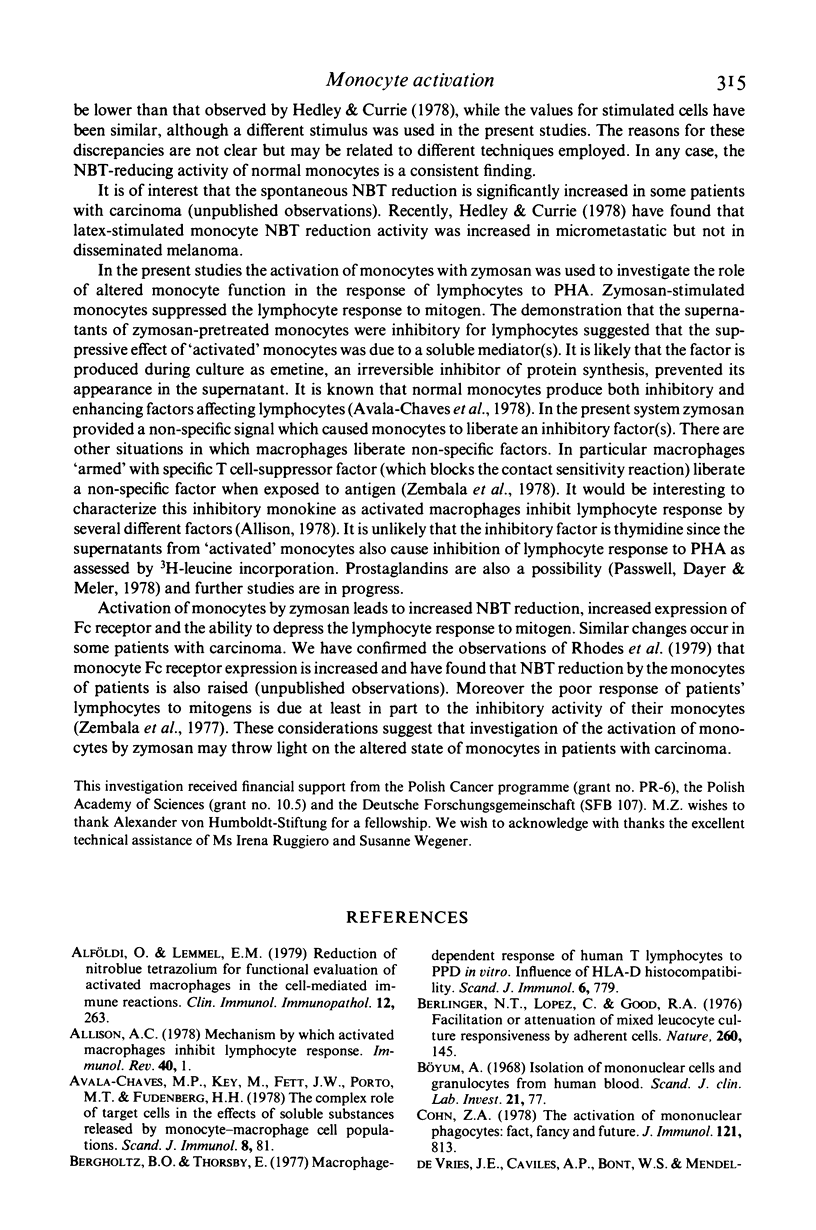
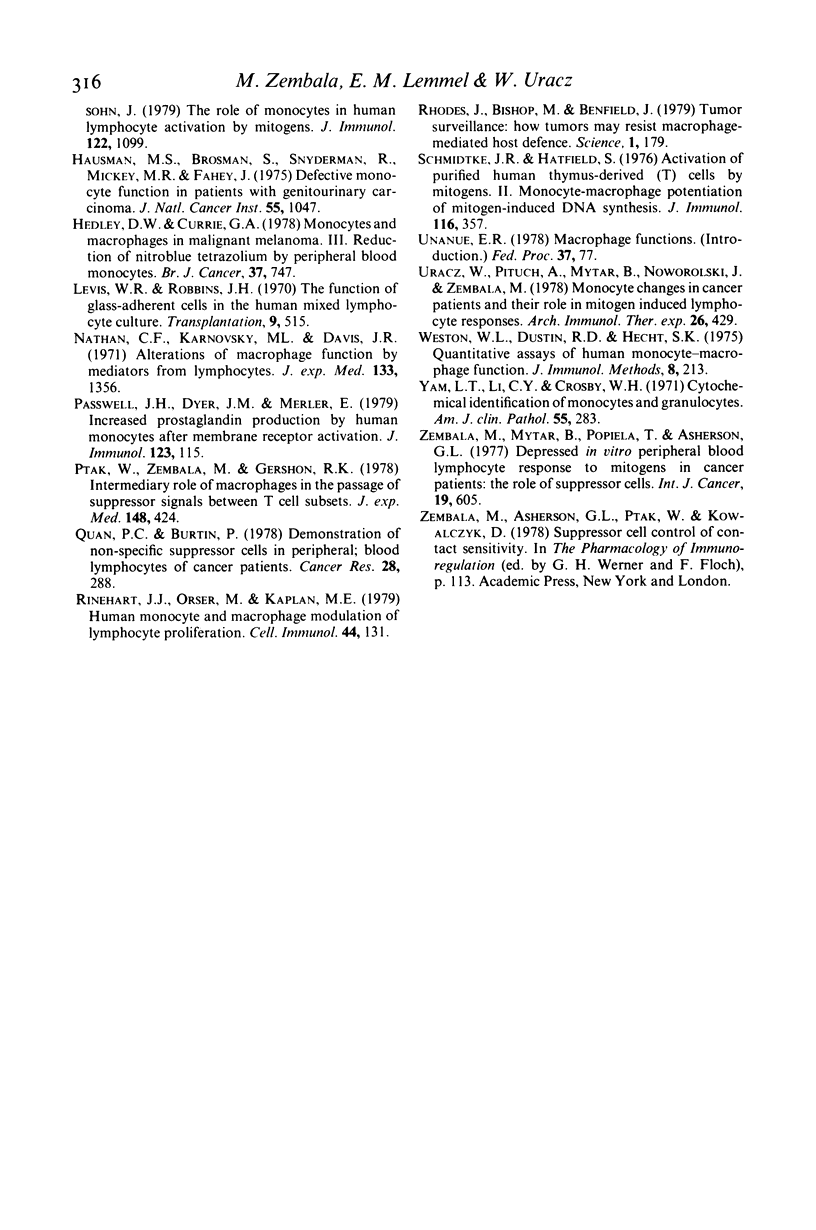
Selected References
These references are in PubMed. This may not be the complete list of references from this article.
- Alföldy P., Lemmel E. M. Reduction of nitroblue tetrazolium for functional evaluation of activated macrophages in the cell-mediated immune reaction. Clin Immunol Immunopathol. 1979 Mar;12(3):263–270. doi: 10.1016/0090-1229(79)90029-1. [DOI] [PubMed] [Google Scholar]
- Arala-Chaves M. P., Key M., Fett J. W., Porto M. T., Fudenberg H. H. The complex role of target cells in the effects of soluble substances released by monocyte-macrophage cell populations. Scand J Immunol. 1978;8(2):81–89. doi: 10.1111/j.1365-3083.1978.tb00499.x. [DOI] [PubMed] [Google Scholar]
- Bergholtz B. O., Thorsby E. Macrophage-dependent response of immune human T lymphocytes to PPD in vitro. Influence of HLA-D histocompatibility. Scand J Immunol. 1977;6(8):779–786. doi: 10.1111/j.1365-3083.1977.tb02151.x. [DOI] [PubMed] [Google Scholar]
- Berlinger N. T., Lopez C., Good R. A. Facilitation or attenuation of mixed leukocyte culture responsiveness by adherent cells. Nature. 1976 Mar 11;260(5547):145–146. doi: 10.1038/260145a0. [DOI] [PubMed] [Google Scholar]
- Böyum A. Isolation of mononuclear cells and granulocytes from human blood. Isolation of monuclear cells by one centrifugation, and of granulocytes by combining centrifugation and sedimentation at 1 g. Scand J Clin Lab Invest Suppl. 1968;97:77–89. [PubMed] [Google Scholar]
- Cohn Z. A. Activation of mononuclear phagocytes: fact, fancy, and future. J Immunol. 1978 Sep;121(3):813–816. [PubMed] [Google Scholar]
- Hausman M. S., Brosman S., Snyderman R., Mickey M. R., Fahey J. Defective monocyte function in patients with genitourinary carcinoma. J Natl Cancer Inst. 1975 Nov;55(5):1047–1054. doi: 10.1093/jnci/55.5.1047. [DOI] [PubMed] [Google Scholar]
- Hedley D. W., Currie G. A. Monocytes and macrophages in malignant melanoma. III. Reduction of nitroblue tetrazolium by peripheral blood monocytes. Br J Cancer. 1978 May;37(5):747–752. doi: 10.1038/bjc.1978.113. [DOI] [PMC free article] [PubMed] [Google Scholar]
- Nathan C. F., Karnovsky M. L., David J. R. Alterations of macrophage functions by mediators from lymphocytes. J Exp Med. 1971 Jun 1;133(6):1356–1376. doi: 10.1084/jem.133.6.1356. [DOI] [PMC free article] [PubMed] [Google Scholar]
- Passwell J. H., Dayer J. M., Merler E. Increased prostaglandin production by human monocytes after membrane receptor activation. J Immunol. 1979 Jul;123(1):115–120. [PubMed] [Google Scholar]
- Ptak W., Zembala M., Gershon R. K. Intermediary role of macrophages in the passage of suppressor signals between T-cell subsets. J Exp Med. 1978 Aug 1;148(2):424–434. doi: 10.1084/jem.148.2.424. [DOI] [PMC free article] [PubMed] [Google Scholar]
- Quan P. C., Burtin P. Demonstration of nonspecific suppressor cells in the peripheral lymphocytes of cancer patients. Cancer Res. 1978 Feb;38(2):288–296. [PubMed] [Google Scholar]
- Rhodes J., Bishop M., Benfield J. Tumor surveillance: how tumors may resist macrophage-mediated host defense. Science. 1979 Jan 12;203(4376):179–182. doi: 10.1126/science.758686. [DOI] [PubMed] [Google Scholar]
- Role of macrophages in the immune response. Immunol Rev. 1978;40:1–255. [PubMed] [Google Scholar]
- Schmidtke J. R., Hatfield S. Activation of purified human thymus-derived (T) cells by mitogens. II. Monocyte- macrophage potentiation of mitogen-induced DNA synthesis. J Immunol. 1976 Feb;116(2):357–362. [PubMed] [Google Scholar]
- Uracz W., Pituch A., Mytar B., Noworolski J., Zembala M. Monocyte changes in cancer patients and their role in mitogen induced lymphocyte responses. Arch Immunol Ther Exp (Warsz) 1978;26(1-6):429–434. [PubMed] [Google Scholar]
- Weston W. L., Dustin R. D., Hecht S. K. Quantitative assays of human monocyte-macrophage function. J Immunol Methods. 1975 Sep;8(3):213–222. doi: 10.1016/0022-1759(75)90114-3. [DOI] [PubMed] [Google Scholar]
- Yam L. T., Li C. Y., Crosby W. H. Cytochemical identification of monocytes and granulocytes. Am J Clin Pathol. 1971 Mar;55(3):283–290. doi: 10.1093/ajcp/55.3.283. [DOI] [PubMed] [Google Scholar]
- Zembala M., Mytar B., Popiela T., Asherson G. L. Depressed in vitro peripheral blood lymphocyte response to mitogens in cancer patients: the role of suppressor cells. Int J Cancer. 1977 May 15;19(5):605–613. doi: 10.1002/ijc.2910190503. [DOI] [PubMed] [Google Scholar]
- de Vries J. E., Caviles A. P., Jr, Bont W. S., Mendelsohn J. The role of monocytes in human lymphocyte activation by mitogens. J Immunol. 1979 Mar;122(3):1099–1107. [PubMed] [Google Scholar]


